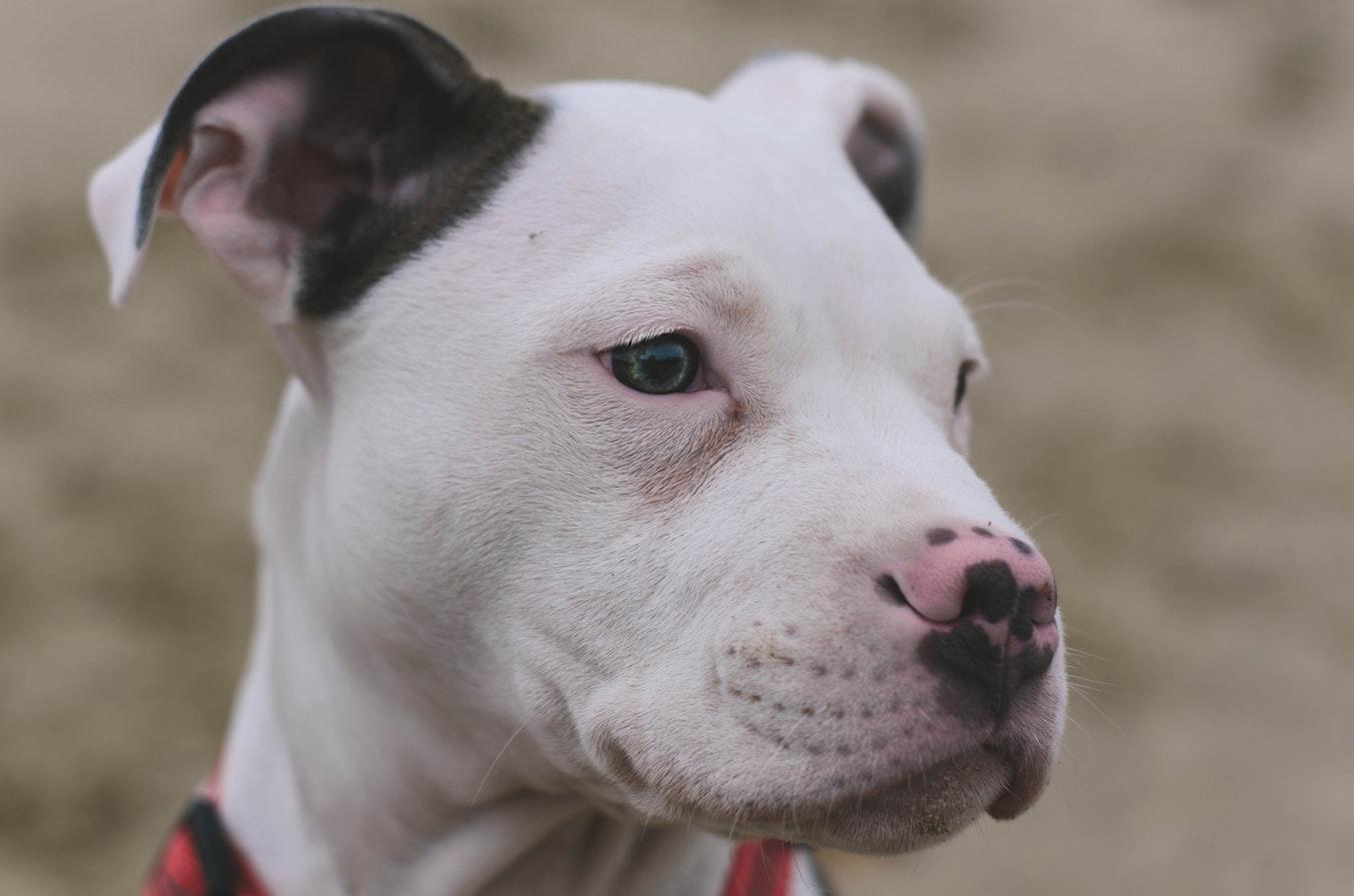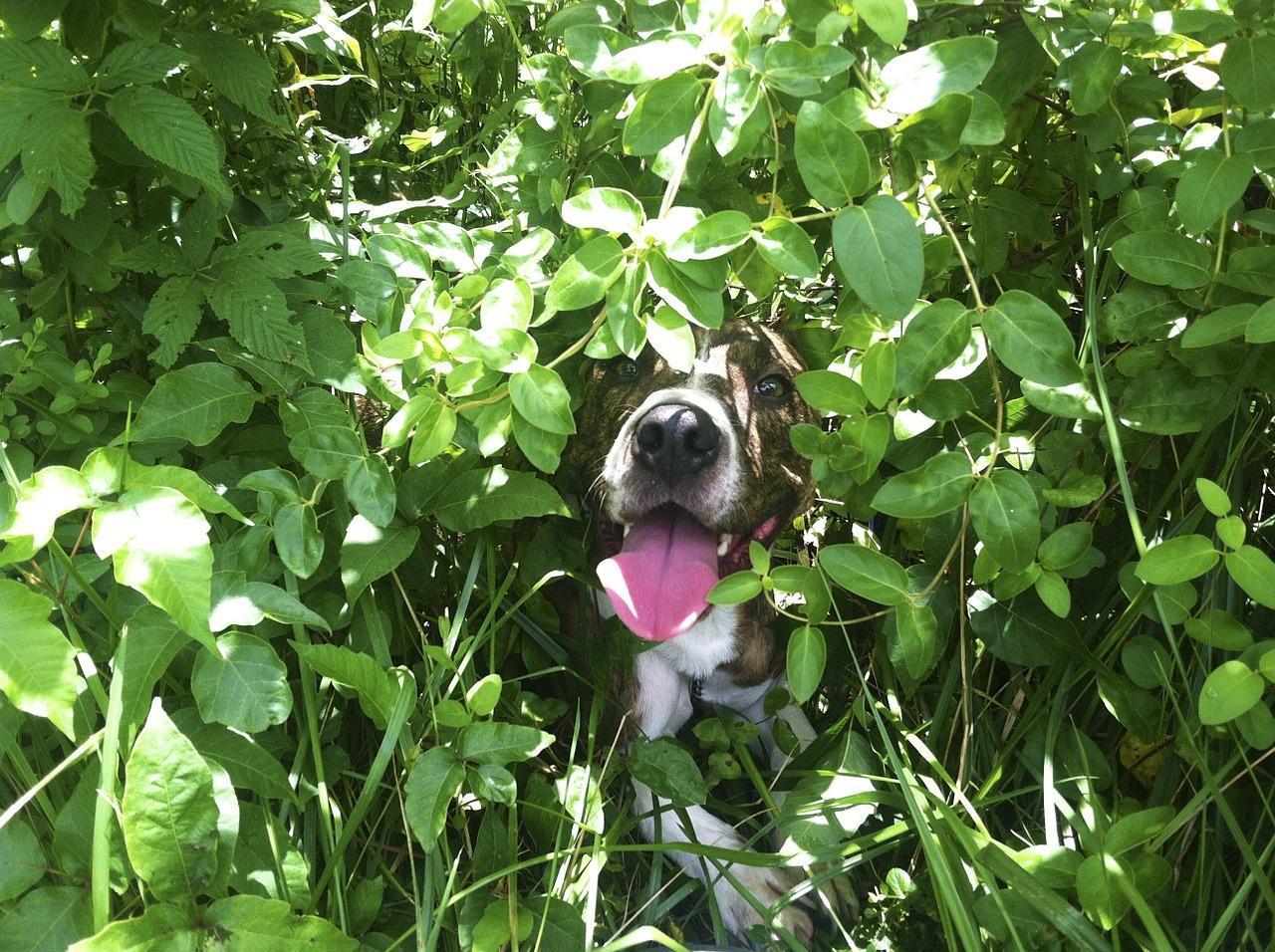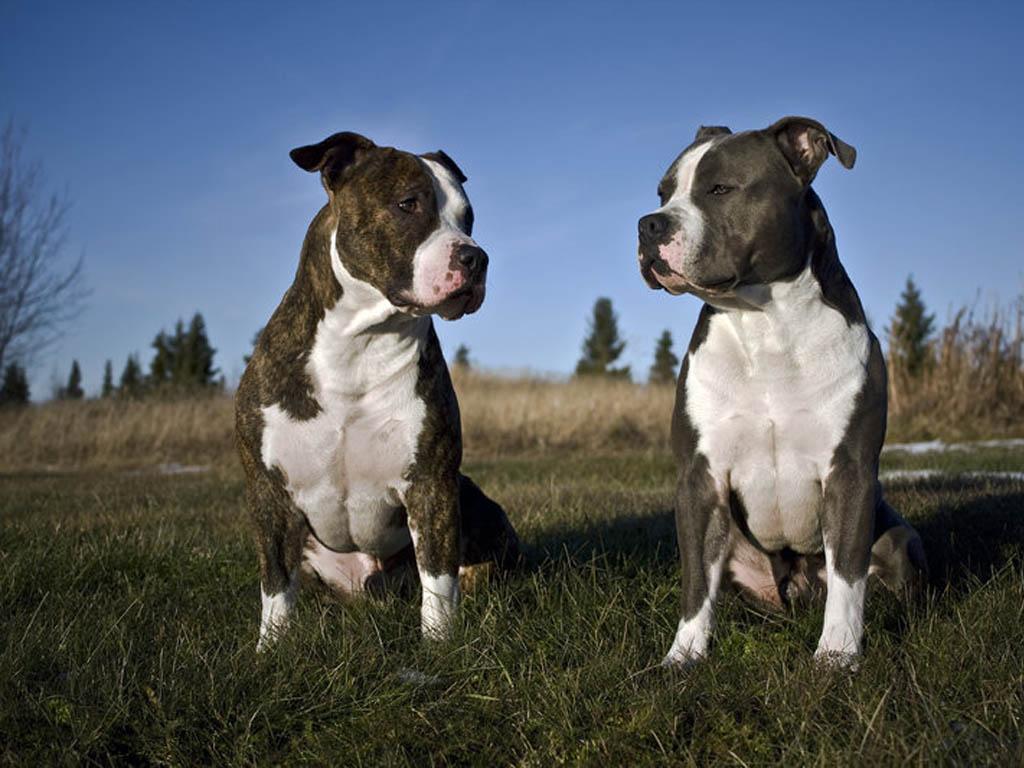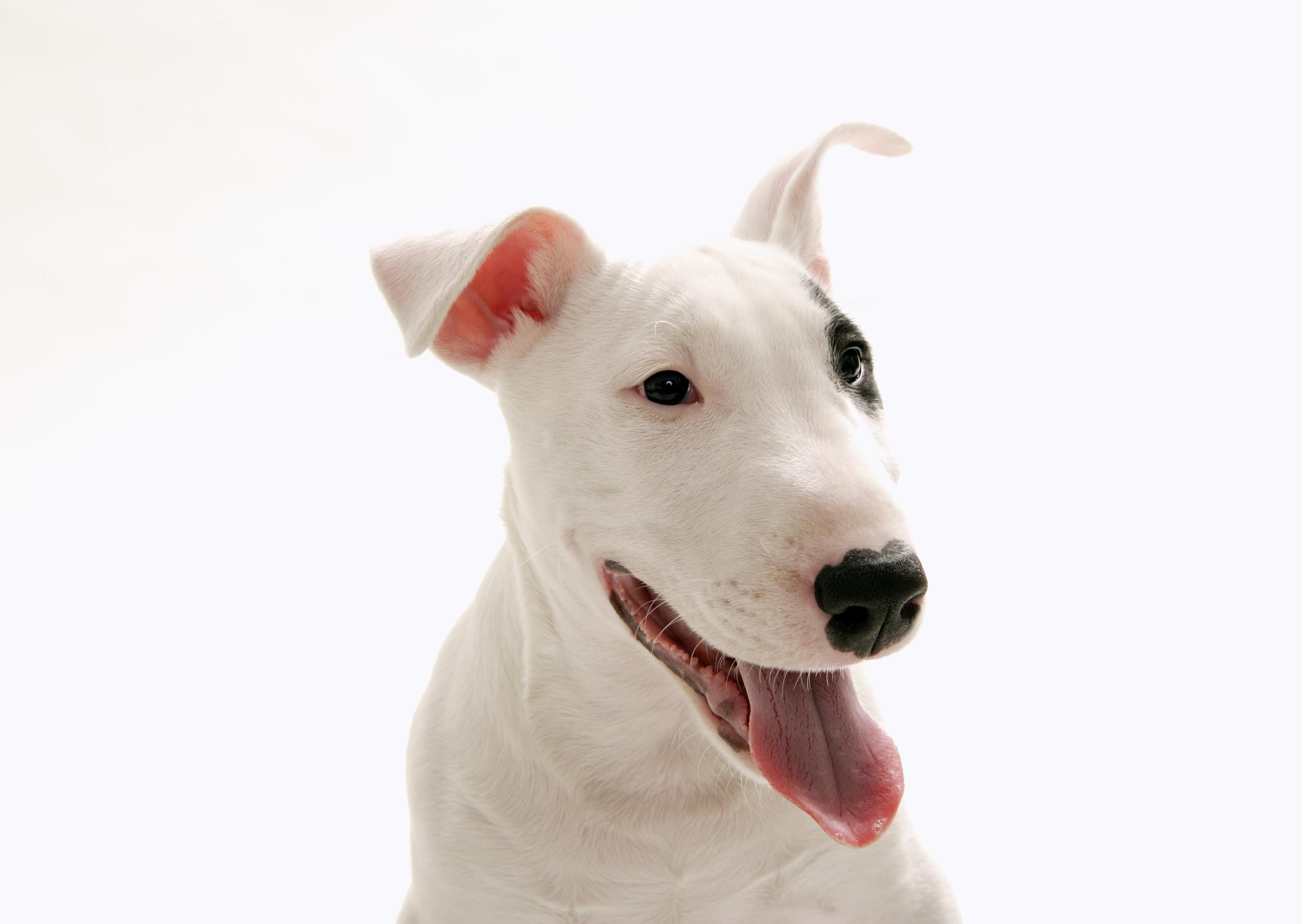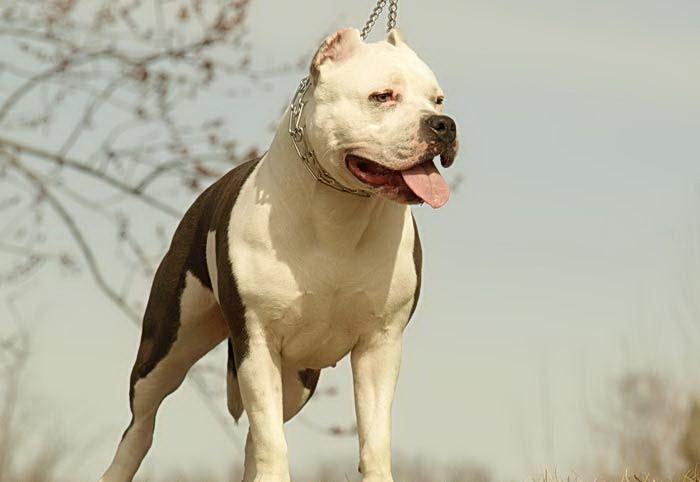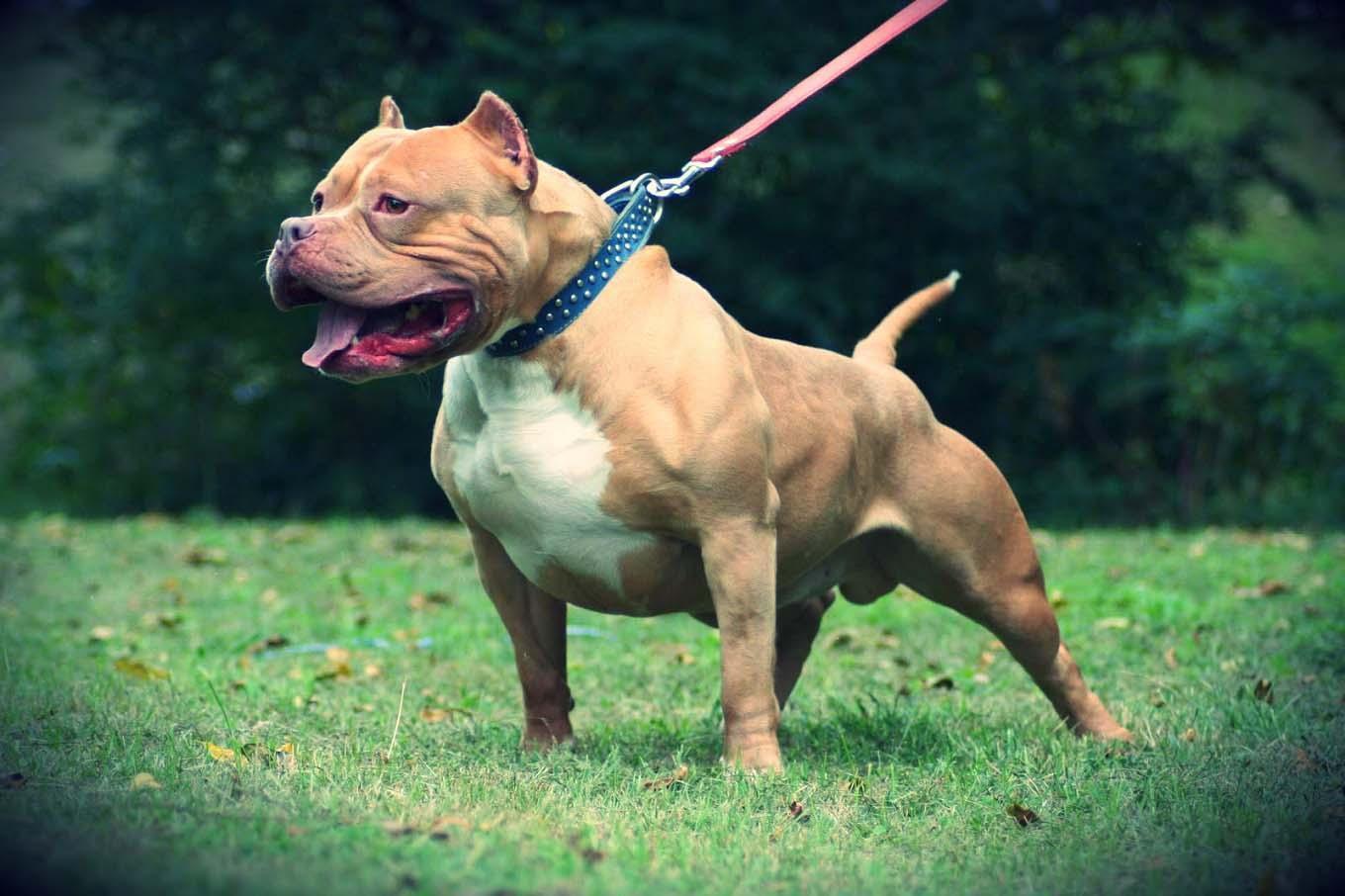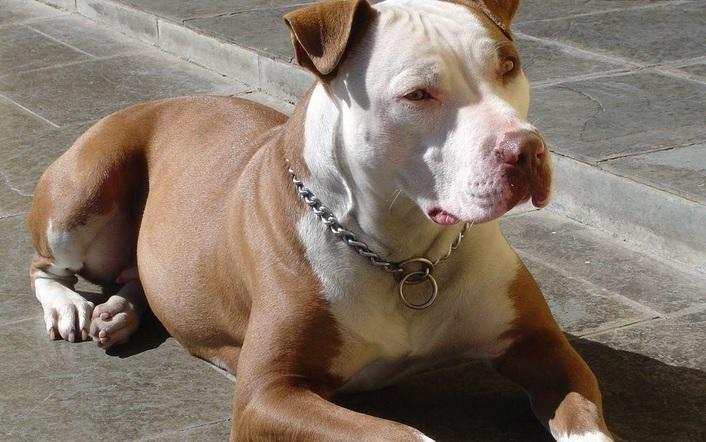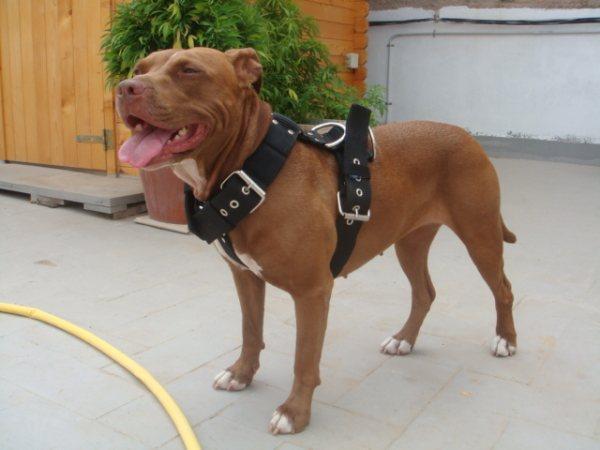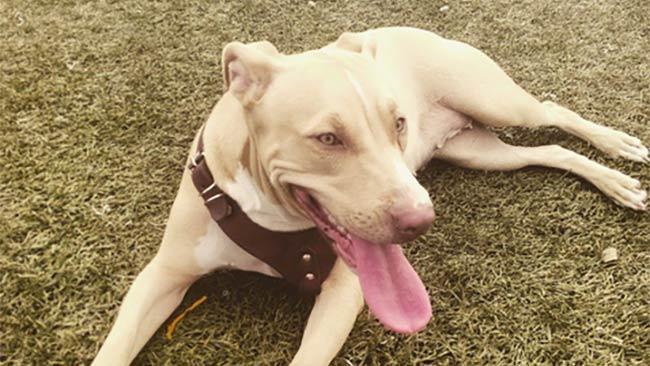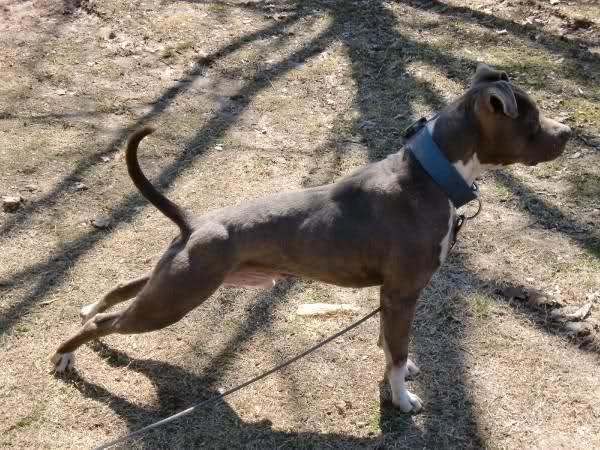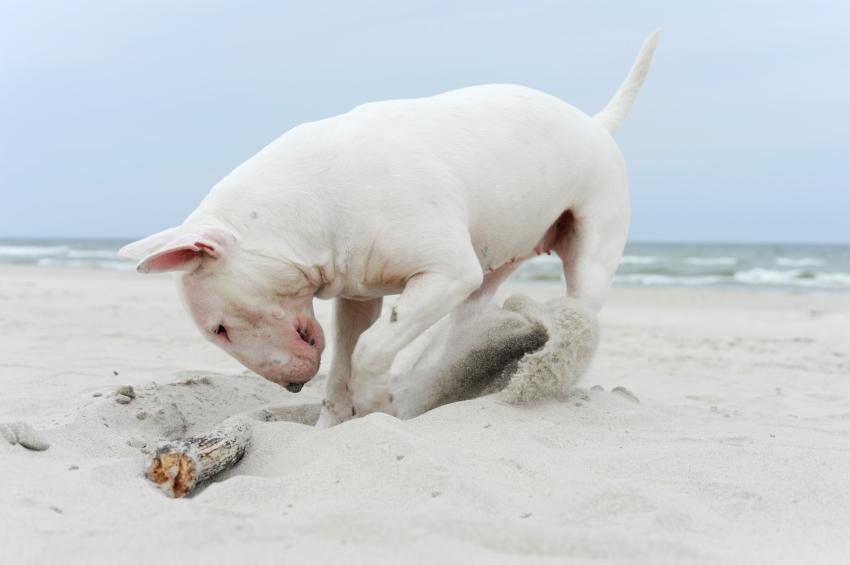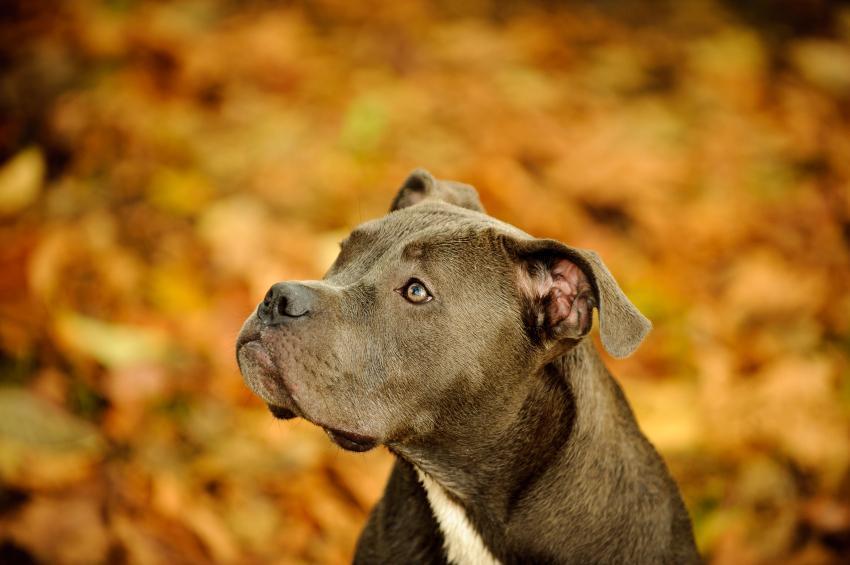Pit Bull Breeds and Types



See files for Dogs
The American Pit Bull Terrier (APBT) is one of the most most popular dog breeds. Unfortunately, even after long periods of domestication, there is still a lot of controversy surrounding them and related Pit Bull breeds. This is often due to misunderstanding and misinterpretation of their nature. The truth is that Pit Bull breeds can be among the most loving, affectionate, loyal and beautiful companions a person can have.
In this AnimalWised article we will try to clarify any doubts that may arise when talking about the different Pit Bull breeds and types you might find. It is vital to be well informed before making any decisions, should you be thinking about adopting one of these wonderful dogs. You will also want to know their different characteristics and features. That's why we bring you these Pit Bull breeds with pictures so you can identify the differences.
What are Pit Bull dogs?
We start by differentiating between the American Pit Bull Terrier from others generically referred to as Pit Bulls. In the first case we have a specific and well defined breed. The second is a term applied to a large group of different breeds which share similar physical characteristics.
Some sources suggest it is not appropriate to speak of Pit Bull breeds. Instead we might speak of different genetic branches which can help us differentiate distinct bloodlines or genealogical history. The result of this genealogical history is manifested in certain shared physical characteristics and behavior.
It is important to note that some of these dogs are rare pit bull breeds. Some are region specific, such as the Pynat and Stuffawler Pit Bulls. These dogs may not even exist in many areas due to a lack of breeding or the relative infancy of the breed. Others may have different names in different territories. For example, the Chamuco is commonly known as the Mexican Pit Bull outside of Mexico. Some, such as the Razors Edge Pit Bull, have been excluded due to lack of suitable breed traits.
Many of these Pit Bull Breeds are not recognized by international dog associations and kennel clubs. However, this is true of all dog breeds at some stage in their development. It will be interesting to see which Pit Bull types will become officially recognized in the future.
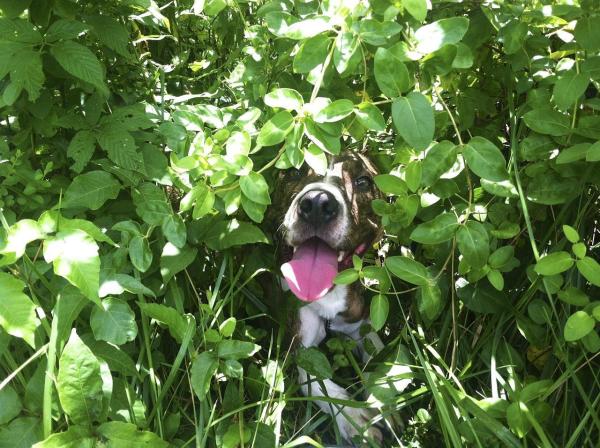
What are the different Pit Bull breeds?
Here are the different types of Pit Bull breeds, along with the main characteristics of each.
In several entries you will see that the dog was originally bred for fighting. In noting this, we are simply highlighting the motive for its creation. In no case does this determine the behavior of an individual Pit Bull and under no circumstances does it mean every dog is intended solely for this purpose. All dogs deserve a home with caring and responsible owners willing to meet all their needs. Obviously, clandestine dog fighting is an intolerable practice.
1. American Pit Bull Terrier: this is the breed par excellence from which the other breeds are believed to have been created. Contrary to what some believe, aggression is not a feature of this dog's behavior. American Pitt Bull Terriers have a friendly and balanced nature. They possess great intelligence and a willingness to work. Their weight can range between 13 and 25 kilos (28 and 55 lbs).

2. Staffordshire Bull Terrier: their weight ranges between 11 and 17 kilos (24 and 37 lbs). They are a compact, muscular and agile dog. While many Pit Bull breeds can show territorial behavior towards other dogs and animals, this breed is noted for its friendly character, particularly with children. They are intelligent, full of vitality and fun. The strong attachment they develop to their owners makes them one of the best family dogs.

3. American Staffordshire Terrier: they have well developed muscles, especially in the chest area. They can weigh up to 35 kilos (77 lbs) and can be found in solid colors, a bicolor coat or with speckles. This is a generally quiet Pit Bull breed, but they have strong instincts.

4. Bull Terrier: One of its most notable physical characteristics are their triangular eyes. They are stubborn but gentle dogs who need the companionship and affection of their adopted family. They are brave and spirited, reaching up to 35 kilos (77 lbs) in weight.
The miniature variety of this breed is among the top 6 short-haired dog breeds.

5. Stuffawler: this line was originally bred for dog fighting. The Stuffawler weighs between 35 and 40 kilos (77 and 88 lbs) and is physically typified by its ‘gasping’ look when smiling. Some believe that they are an aggressive Pit Bull type, but aggressive behavior in a dog often depends on the treatment they receive from their owner.

6. Monster blue: this breed, considered to be a type of Pit Bull, is a cross between a Neapolitan Mastiff and a Dogue de Bordeaux. They have a powerful jaw and a thick and heavy build. Their weight can range between 45 and 60 kilos (99 and 132 lbs).

7. Colby: the breeding and reproduction of the Colby began in 1889, with dog fighting in mind. It has a balanced character, being great at watching over children. The Colby Pit Bull is characterized by a broad, strong head with a flat and wrinkled snout. They are generally not very heavy.

8. Chamuco: this breed is also known as the Mexican Pit Bull. It is the smallest of the Pit Bulls and was designed for dog fighting. It is characterized by having high resistance based on a thin but muscular structure.
Currently breeding and selection are illegal, as these Pit Bulls are still used for dog fighting. The truth is that the Chamuco is not very territorial and tends to trust humans.

9. Spike: this Pit Bull type is of US origin and believed to contain a Dalmatian bloodline as its fur is white with black spots. These dogs have poorly developed muscles and they are friendly and quiet, which makes them ideal as companions.

10. Red Nose: this line came about in Ireland in 1830. Its fur is brown or white, and it has honey-brown or green eyes. This type of Pitt Bull is characterized by a pinkish nose and a thin muscular build with long legs and a strong back. Their weight can range between 25 and 30 kilos (55 and 66 lbs).

11. Cobra: the physical structure of this type is similar to that of the red nose, although the Cobra is characterized by black or blue eyes and always has an unblemished white coat.

12. Villaliberty: a line bred in Spain from the Red Nose type. Its physical structure is admirable and its behavior makes this Pit Bull an ideal pet because it is balanced, stable, secure and brave.

13. Pynat: is a thin but muscular Pit Bull type that can weigh up to 30 kilos (66 lbs). Its coat can be brindle and its nose is soft. It has been used as a hunting dog.

14. Gamer: this is another Pitt Bull type unfortunately bred for fighting, which makes them inappropriate for first time owners. These dogs have a great athletic ability and a thin and muscular build. Their weight can range between 25 and 30 kilos (55 to 66 lb).

15. Johnson: the maximum weight of this Pit Bull type is 40 kilos (88 lbs). Physically speaking, its features are reminiscent of the Bulldog, with a coat that comes with patches or in white. This is a very strong dog but it is also slow and docile.

Which is the best Pit Bull?
Noting the great diversity of Pit Bull types and breeds we may ask ourselves which is the best breed or bloodline. This question is misleading from the beginning, because each dog has different characteristics which are not negative nor positive by themselves.
What we must consider when asking ourselves if we want to adopt a Pit Bull is the degree to which its characteristics are adapted to our lifestyle and needs. Regardless of the different types, if you want to adopt a Pit Bull you should consider the following:
- They are dogs that need constant exercise, so they require a large space and a committed owner to supply the dog all the necessary discipline.
- A good socialization process from the time they are puppies is necessary, especially regarding other animals.
- If there are young children at home we must be clear that adult supervision is necessary when they share a space with the dog, not because the dog is aggressive but because it is strong.
- Pit Bull dogs can only go for a walk under their owner's responsibility.
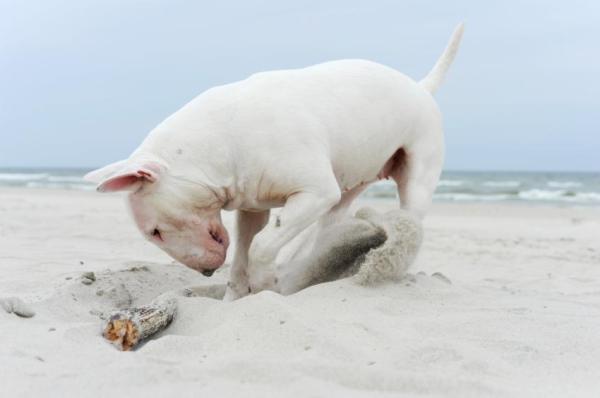
Have you decided to get a Pit Bull?
If you have decided to get a Pit Bull type dog as a pet we recommend you consult local legislation as some breeds and types are illegal depending on the country. Despite such legislation, you should not in any way think that such dogs are necessarily dangerous. You would be surprised to see the skills many Pit Bulls have with kids.

Myths about Pit Bulls
While there are different types of Pit Bulls, they do share some common characteristics. Pit Bull breeds are generally muscular dogs with a strong bite and, unfortunately, a bad reputation with some. Incorrect information about Pit Bull attacks or sensationalized stories contribute to this situation. However, much of this has to do with the terrible abuse individuals have suffered at the hands of many owners who have historically engaged them in the vile practice of dog fighting. This does not mean that Staffies, for example, are inherently dangerous dogs.
According to the American Temperament Test Society[1], the Pit Bull is second only to the Labrador Retriever in terms of temperament. The test was carried out on as many breeds as possible, administering and recording the test to find out which breeds met the highest standards in terms of temperament. This involved meeting oddly dressed strangers, firing guns to potentially spook them, walking on uncomfortable surfaces and more. They are carried out by professionals and are repeated as much as possible.
This test is not perfect, but it does go some way to show the importance of treating the dog as an individual. This is the stance of the American Society for the Prevention of Cruelty to Animals which states that ‘genetics do not exist in a vacuum’[2]. Many factors influence a dog's behavior, but this is true of all breeds. More important than breed is adequate socialization, humane treatment and early positive experiences in terms of a dog's aggression. By enforcing breed specific legislation, as pointed out by the ASPCA, you only create the illusion of public safety. By treating dogs on an individual basis you will be better able to stop attacks, prevent purposeful mistreatment and educate owners and the public about how to treat a animals safely and humanely.
Unfortunately, a lot of misinformation is posted online by anti-Pit Bull acolytes. Many provide information which ostensibly looks credible, but crumbles under scrutiny with only a little digging. One of the major pieces of ‘research’ is the so-called Clifton Report which is written by an author who defrauded readers in terms of his credentials and continually refuses to publish the raw data behind his claims[3].
It is true there have been incidents where children have been attacked and even killed, but this is not limited to the Pit Bull. Families of these victims have, understandably, called for breed specific legislation, placing the blame on the breed itself. However, a nine year long study released in 2013 cites that dog-bite related fatalities in the USA were characterized by ‘coincident, preventable factors’ and that the dog ‘breed was not one of these’[4]. More important was a lack of supervision, failure to neuter the dog, inability of the victim to interact appropriately with dogs, mismanagement, neglect and abuse. Breed specific legislation is a reactionary tack which has little evidence to prove its efficacy. This was substantiated by President Barack Obama, who is quoted in the ASPCA statement.
Another myth about Pit Bull type dogs is that they have a locked jaw which is impossible to break. While many of these dogs do indeed have a strong bite, it is a myth that their jaw locks. It can be broken using a bite stick or by some of the other ways mentioned in our article on breaking a Pit Bull's bite. Another important factor in Pit Bulls is the tendency to dock their tails and ears which makes it more difficult to recognize the signs of aggression in these dogs.
Unfortunately, it is very difficult to discuss Pit Bulls without people using their emotional response rather than looking at the reasons behind dog attacks and what can prevent them. With such large muscular dogs, it is understandable that people may be intimidated. However, we do not have the same stigma against Siberian Huskies which we appropriately consider adorable dogs, despite the fact that they contribute to the greatest number of dog attack fatalities in the parts of Canada where they are most common. Population numbers are often ignored by those who want to unfairly vilify Pit Bulls. The importance of population is pointed out in a study by the American Veterinary Medical Association which concludes that breed is ‘a poor sole predictor of aggressiveness and pit bull-type dogs are not implicated in controlled studies’[5].
Pit Bulls can be loving and wonderful dogs for individuals and families. It is only with proper understanding and consideration that their reputation can be changed and that people can really start to appreciate this breed appropriately, just as it is with any breed of dog. As always, we encourage readers to trust empirical evidence and rigorous study carried out by evidence based programs.

If you want to read similar articles to Pit Bull Breeds and Types, we recommend you visit our Comparisons category.
- American Temperament Test Society. (2011) Breed statistics. Retrieved from
https://atts.org/breed-statistics/statistics-page8/ - ASPCA. (n.d.) Position statement on Pitt Bulls. Retrieved from
https://www.aspca.org/about-us/aspca-policy-and-position-statements/position-statement-pit-bulls - Cooper, D. A. (2016). The academic imposter behind the Pit Bull hysteria. Retrieved from
https://www.huffingtonpost.com/douglas-anthony-cooper/merritt-clifton-pit-bulls_b_5866176.html - Patronek, G. J., et al. (2013). Co-occurrence of potentially preventable factors in 256 dog bite–related fatalities in the United States (2000–2009). JAVMA, 243(12), 1726-1736.
https://avmajournals.avma.org/doi/abs/10.2460/javma.243.12.1726 - AVMA. (2014). Dog bite risk and prevention: the role of breed - literature review. Retrieved from
https://www.avma.org/KB/Resources/LiteratureReviews/Pages/The-Role-of-Breed-in-Dog-Bite-Risk-and-Prevention.aspx

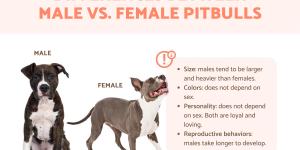




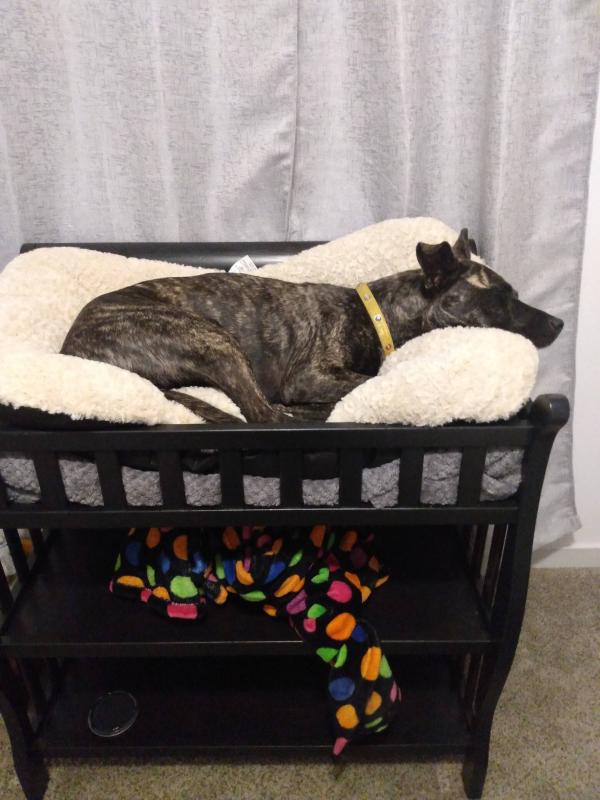 I have 1.5 year old female..her mom is a black and white pitbull. All the puppies in the litter were also black and white, accept for mine,, she has very unique coloring and her ears are extremely large and upright. Can anyone help me figure out what shes mixed with?
I have 1.5 year old female..her mom is a black and white pitbull. All the puppies in the litter were also black and white, accept for mine,, she has very unique coloring and her ears are extremely large and upright. Can anyone help me figure out what shes mixed with?

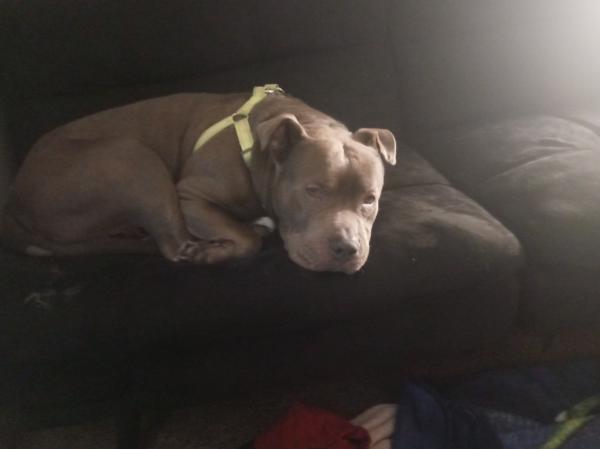 I am having trouble trying to find the specific breed of a dog that I inherited. I estimate that he is probably around 3 years old.
I am having trouble trying to find the specific breed of a dog that I inherited. I estimate that he is probably around 3 years old.

 Could you tell me more about the “Spike” pit mix? The photo and description fits our new rescue perfectly, but I cannot find any other reference to this breed anywhere else.
Could you tell me more about the “Spike” pit mix? The photo and description fits our new rescue perfectly, but I cannot find any other reference to this breed anywhere else. 

 My sister brought me down a dog for my birthday and she said it was full pitbull but I’ve had other people tell me that she doesn’t look like she’s full-blooded do you think you could help please and thanks ☺️
My sister brought me down a dog for my birthday and she said it was full pitbull but I’ve had other people tell me that she doesn’t look like she’s full-blooded do you think you could help please and thanks ☺️

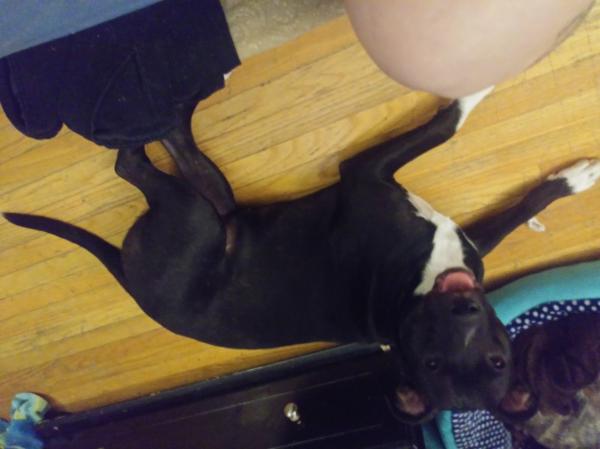 Getting a pitbull was the best decision I have ever made. My Beverly is the most loveable and silly girl. She loves everyone and cats.
Getting a pitbull was the best decision I have ever made. My Beverly is the most loveable and silly girl. She loves everyone and cats.

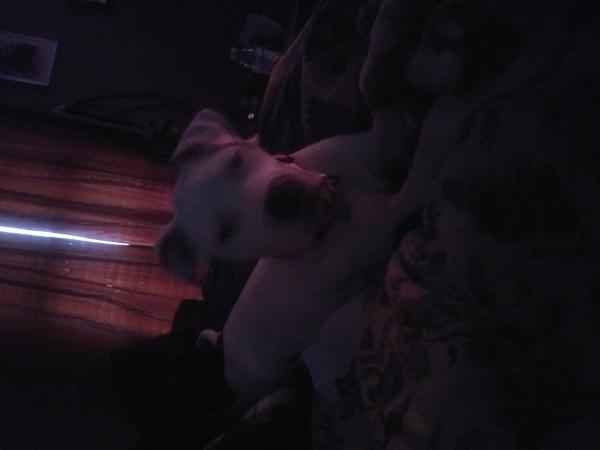 my comment is for all pit owners as being 1 myself ppl say its all in how ya raise them and i do believe thats true to some extent althjo if ya will recall new articals to where pit bulls have attacked every age from toddlers to old folks and everytime its all the same answer or comment my dog has never offered to bite any one he has never been aggressive a dog has a personality just like humans altho it seems like when a pit bull goes off the deep end there is no bringing them back i no that a pit is not the breed of dog that ranks up to the top or near the top for bites when a pit goes to bite he is very aggressive and will not stop untill its prey is dead thats why it has took me so long to get this breed trust is an issue to make a long story short i told my grand kids if she ever bites with aggression i will have her taken away from here n we shall h=get another beagle ( just saying )
my comment is for all pit owners as being 1 myself ppl say its all in how ya raise them and i do believe thats true to some extent althjo if ya will recall new articals to where pit bulls have attacked every age from toddlers to old folks and everytime its all the same answer or comment my dog has never offered to bite any one he has never been aggressive a dog has a personality just like humans altho it seems like when a pit bull goes off the deep end there is no bringing them back i no that a pit is not the breed of dog that ranks up to the top or near the top for bites when a pit goes to bite he is very aggressive and will not stop untill its prey is dead thats why it has took me so long to get this breed trust is an issue to make a long story short i told my grand kids if she ever bites with aggression i will have her taken away from here n we shall h=get another beagle ( just saying )

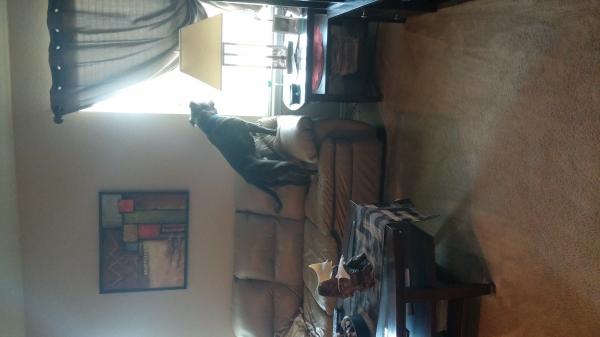 Tell me more about the "gamer" pitbull dog.
Tell me more about the "gamer" pitbull dog. 
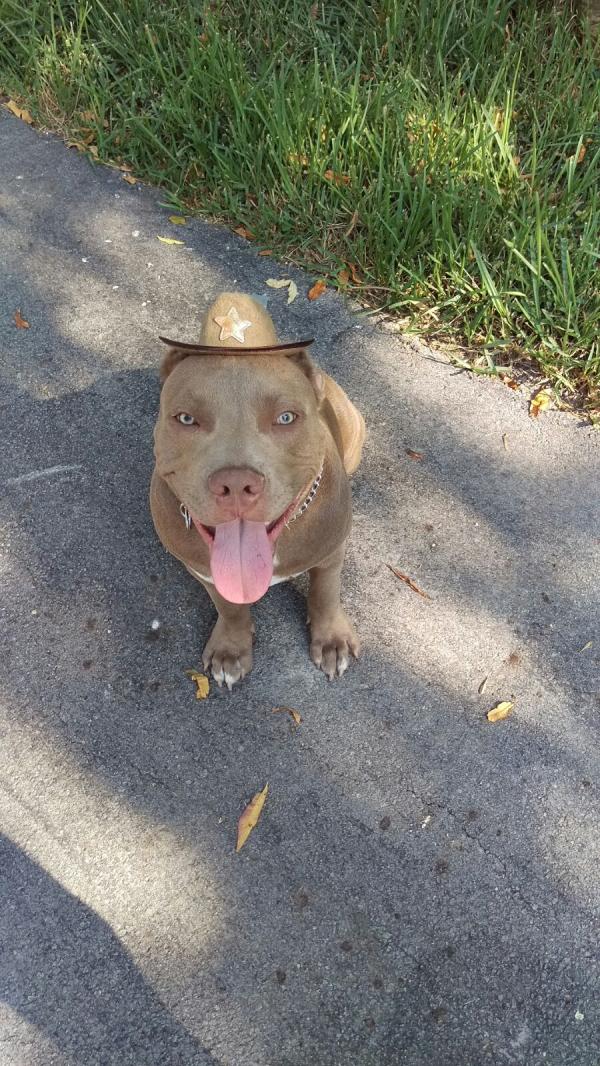 How can I introduce my baby to other dogs? He's kinda like wants to play with the other dog in a hard way :(
How can I introduce my baby to other dogs? He's kinda like wants to play with the other dog in a hard way :(

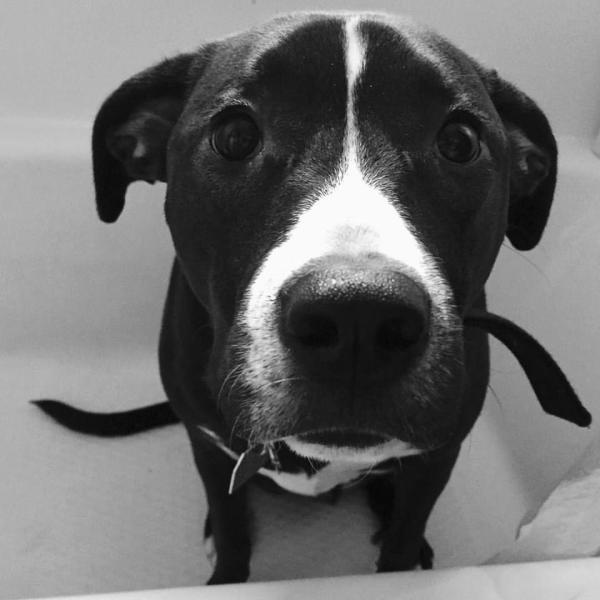 LOVE, LOVE, LOVE this! This explains everything about our baby boy Jasper. Thank you for this article! Jasper is a rescue that we had since he was born. Sadly, some jerk left him and his three sisters in a card board box along side of the road. Thank GOD they were all rescued and live in great homes!
LOVE, LOVE, LOVE this! This explains everything about our baby boy Jasper. Thank you for this article! Jasper is a rescue that we had since he was born. Sadly, some jerk left him and his three sisters in a card board box along side of the road. Thank GOD they were all rescued and live in great homes!

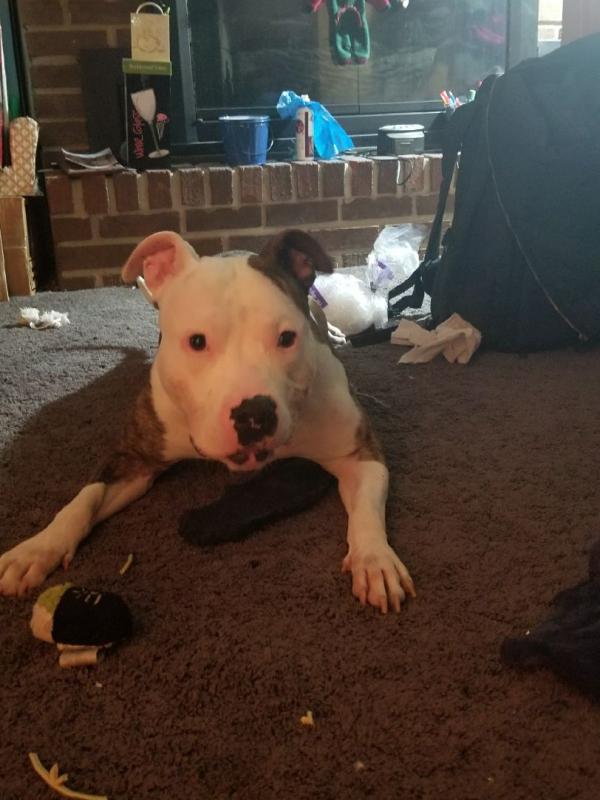 Great article! I hate the stigma associated with this loving, loyal, clownish breed. We adopted Kane (pictured) in December. Now, I will be honest, it's been sort of a rocky relationship between Kane and the resident cats, but that's because Kane was one-and-a-half years old when he became a part of our family. But he's learning that cats are his friend. It's a slow process but I knew that already and was prepared. Pits are just like kids - they learn from their environment. Now Kane has a loving, fun, and safe environment he can learn and grow from. I've owned many different dog breeds and by far, even with his "shady" past, Kane has showed us more love and affection than any other.
Great article! I hate the stigma associated with this loving, loyal, clownish breed. We adopted Kane (pictured) in December. Now, I will be honest, it's been sort of a rocky relationship between Kane and the resident cats, but that's because Kane was one-and-a-half years old when he became a part of our family. But he's learning that cats are his friend. It's a slow process but I knew that already and was prepared. Pits are just like kids - they learn from their environment. Now Kane has a loving, fun, and safe environment he can learn and grow from. I've owned many different dog breeds and by far, even with his "shady" past, Kane has showed us more love and affection than any other.

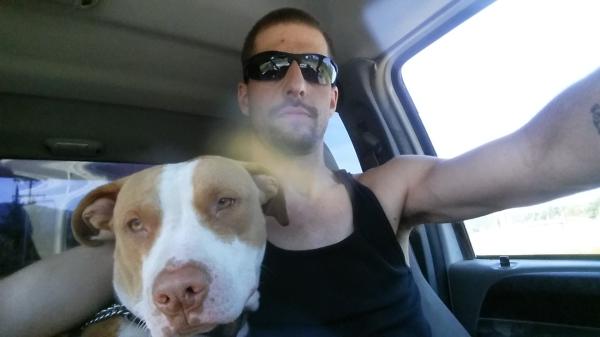 This was an amazing read, thank you for posting. This is my baby her name is Dallas Rae, not sure how old she is (she's adopted). I couldn't be happier.
This was an amazing read, thank you for posting. This is my baby her name is Dallas Rae, not sure how old she is (she's adopted). I couldn't be happier.

 Love pits never had a problem with them recommend for anyone
Love pits never had a problem with them recommend for anyone

